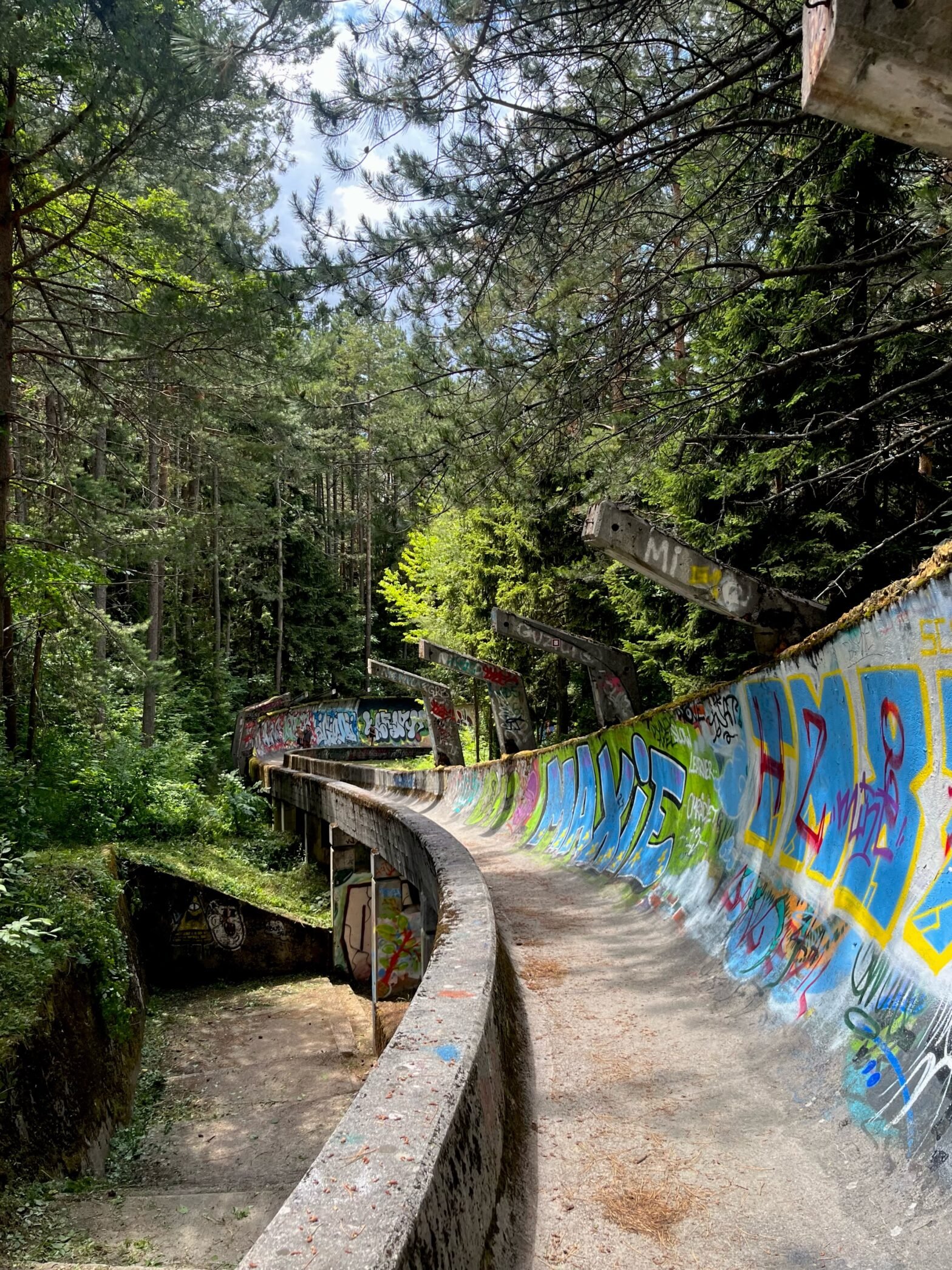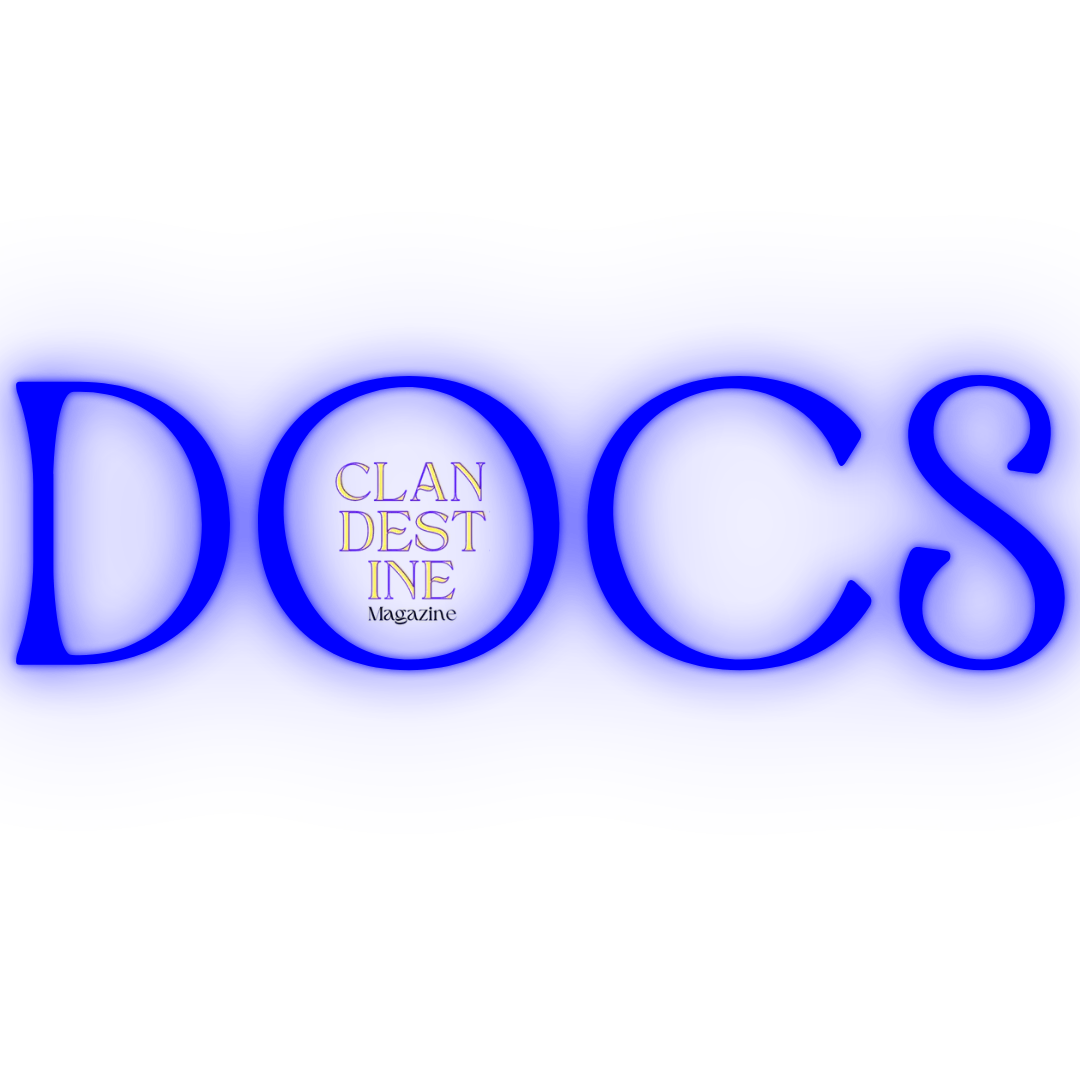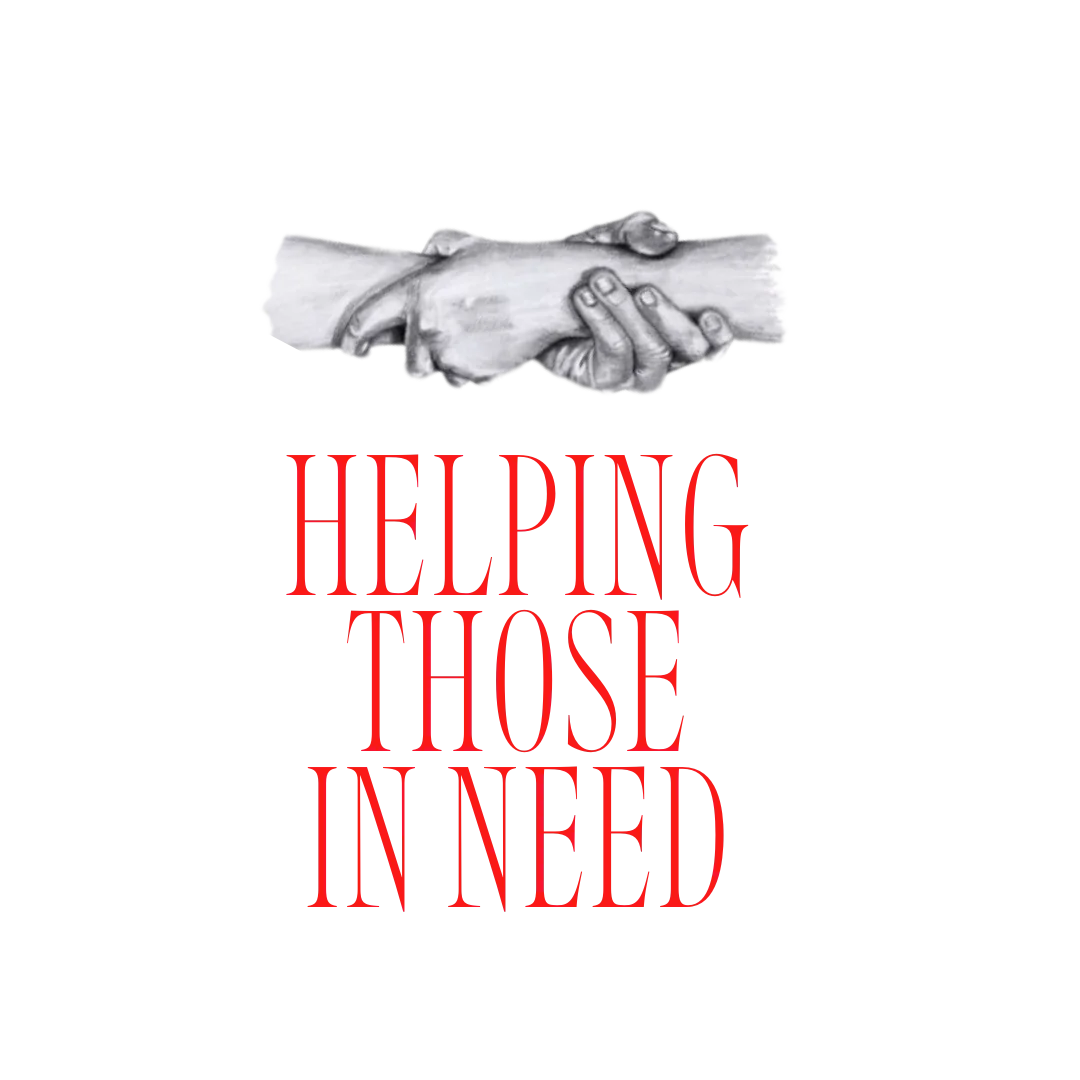Where else in the world can you stroll down and explore an abandoned bobsleigh and luge track, once used in a prominent Winter Olympics, and later entwined with one of Europe’s most infamous wars? Just outside Sarajevo, the Bosnian bobsleigh and luge track winds its way down Trebević Mountain, now almost completely cloaked in vibrant graffiti and mural work. This beautiful relic of the 1984 Winter Olympics attracts thousands of tourists each year, offering an experience that is as much about sport as it is about history.
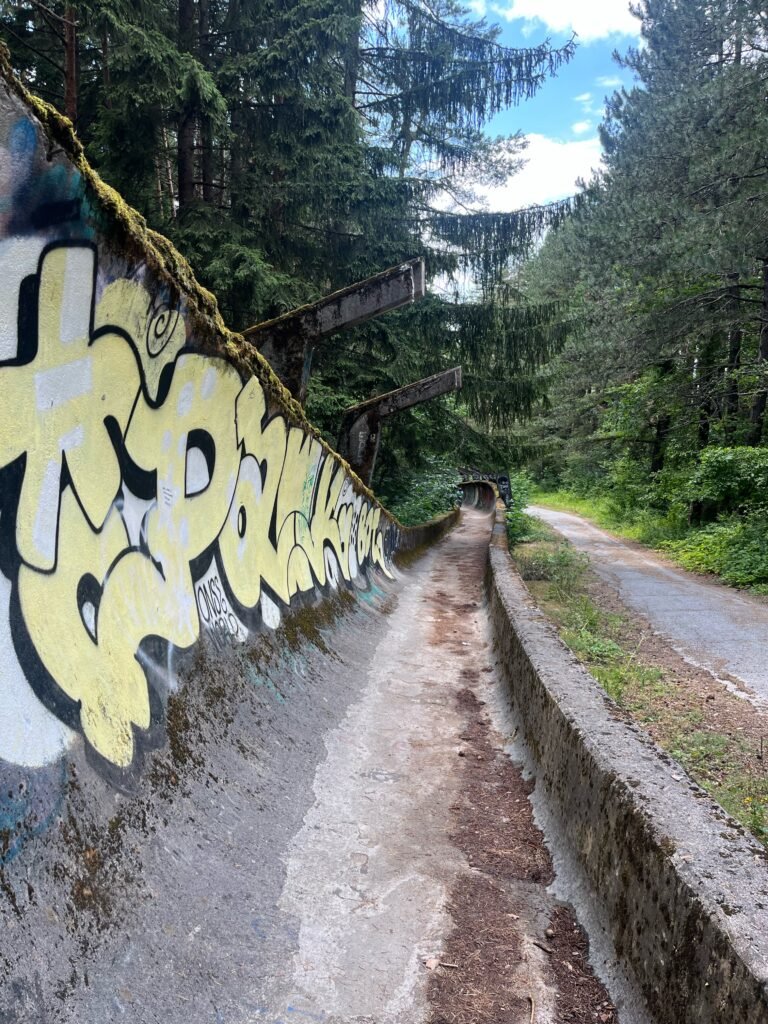
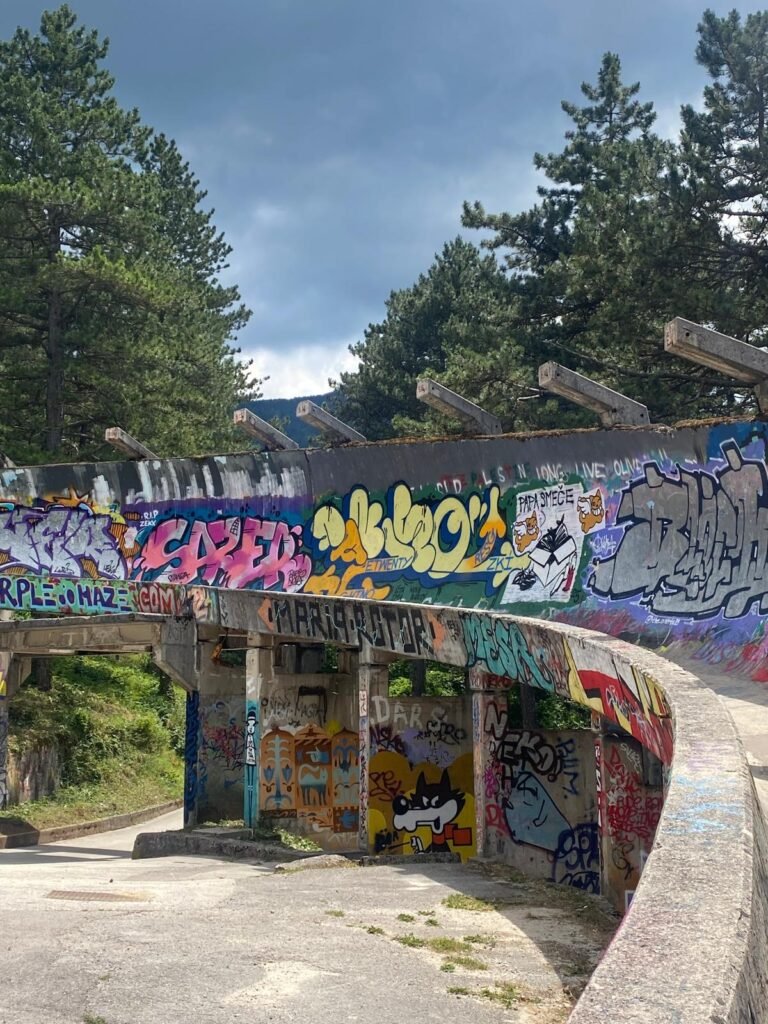
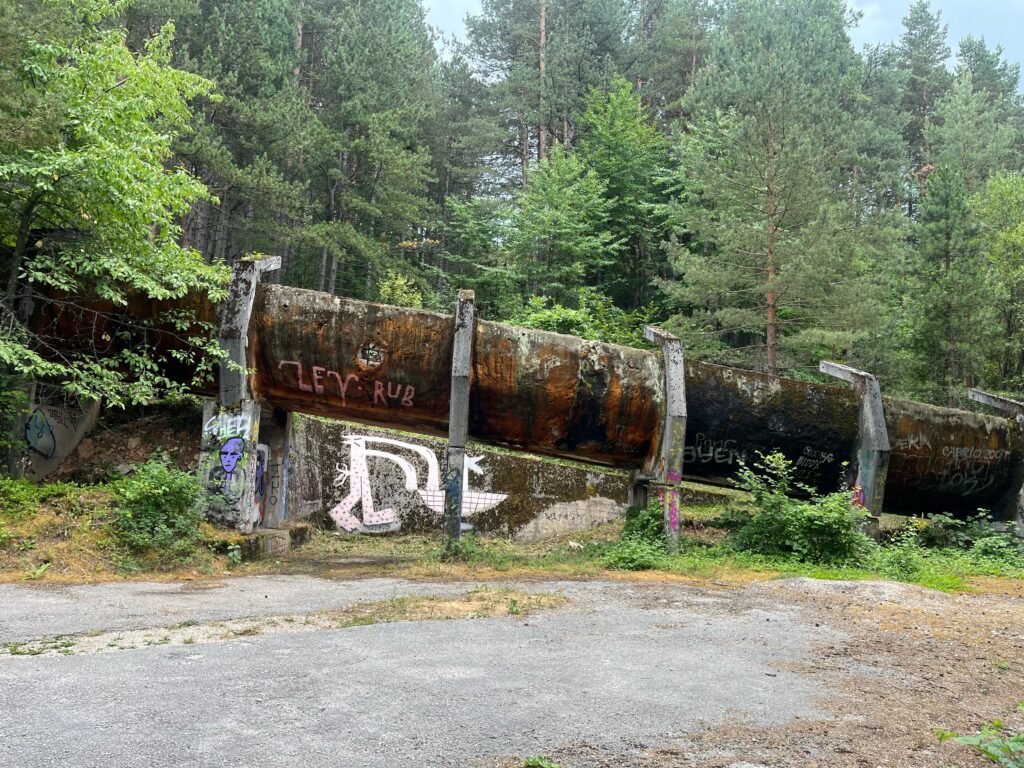
One of the most intriguing remnants of Olympic history, the track holds many charms and tells a complex story of Bosnia’s political past. Almost forty years after the Sarajevo Games, the track now provides a stunning and surreal route through the forested slopes of Trebević. As you wander down its kilometre of twists and turns, it might come as a surprise to learn that the track is still in sporting use, albeit on a much smaller scale. Today, the track comes alive during the summer months, serving as a training ground for professional luge athletes. However, due to significant underfunding, this is only possible through the passion and dedication of former luge competitor Senad Omamović. Fuelled by his love for the sport, Senad has taken it upon himself to keep the dream alive. His ultimate goal is to restore the track to its former triumph and provide renewed hope for the young athletes of Bosnia and Herzegovina. While the track stands as a stark reminder of war and hardship, it also symbolises resilience and revival. It reflects the spirit of the Bosnian people and their enduring commitment to rebuilding and moving forward, both in sport and in life.
The bobsleigh and luge track originally began construction in 1981, with the expectation of being utilised at an Olympic level. Before then, however, the first major event held on the track was the European Bobsleigh Championship in 1983, which was an enormous success. The track quickly became known as world-class as experts deemed it safe, quick and technically interesting, while requiring extreme concentration and technical knowledge. For Sarajevo, the 1984 Winter Olympics hold a particularly cherished place in history. Unlike the boycotted Games of Moscow 1980 and Los Angeles 1984, these Winter Olympics were marked by a rare sense of unity, with every nation present. This spirit helped make them one of the best-organised in Olympic history. “We are one of the few that can boast of being an Olympic city. We are very proud of that, we appreciate it, and we are grateful that we were entrusted. A huge number of volunteers were engaged in preparing everything. Everyone was proud,” recalled Nedzad Fazkilja, a five-time Olympian and Senior Associate for Sport and Sport Education at Sarajevo’s Department of Education, Culture, Sport and Youth, speaking to Olympics.com.
Following its Olympic success, the bobsleigh and luge track on Mount Trebević remained in use for competitions and training long after the Games ended. However, this quickly changed with the outbreak of the Yugoslav Wars. Just eight years after hosting the Winter Olympics, Sarajevo became the epicentre of the Bosnian War, which lasted from 1992 to 1995 and inflicted severe damage on the city. Mount Trebević, home to the bobsleigh and luge track, became a strategic vantage point during the conflict. The track itself was repurposed as a military asset and artillery post by Bosnian Serb forces. Today, the concrete structure still bears scars of its turbulent past, with bullet holes and collapsed sections visible along the course. Yet, out of the war emerged an independent and culturally vibrant Bosnia and Herzegovina. Sarajevo now thrives as a city rich in religious diversity, historical depth, and natural beauty.
The track is currently frequented by both tourists and locals, primarily for walking and sightseeing. However, many are surprised to learn that it is still in use for sporting purposes. Leading the effort to revive the track’s original function is Senad Omamovic, president of the Bosnian Luge Federation and a key figure in the track’s remarkable revival. Senad previously watched the 1984 Games as a supporter, and his love and dedication to the Luge event flourished from then on. Before the war, Sarajevo hosted three World Cup races every year, in bob, luge and skeleton. Today, the lower half of the track is still used for luge training during the summer, nurturing a new generation of Bosnian athletes.
Mirza Nikolaev is a twenty-three-year-old luger born in Sarajevo. He once asked his parents to take him to the bobsleigh and luge track after catching a glimpse of the location on a local news programme. It wasn’t long before he was enthralled by the sport and became a member of Bosnia’s junior luge team. “I fell in love with the sport instantly. Senad introduced me to it, and I loved it. I wanted to do it a hundred times a day,” Mirza told the BBC. Utilising the track for their summer training sessions makes winter competition around Europe a possibility for the younger generation. “If I hadn’t practised here, it would have been a disaster on ice,” he says. “It helps a lot that we have our own track; only nine countries have one.”
While this seems an idyllic setting to get into the high-paced sport, glamour at the track is in short supply. There is a sufficient lack of funding which goes toward the track’s renovation, upkeep and into the Luge training sessions themselves. Before each summer season, Mirza, his teammates, and their coach, Senad,return to the luge track to repair concrete damage, patch cracks, and clear debris, such as pinecones and fallen leaves, from the course. In the recent documentary The Track (2024), which follows the lives of these young athletes, Senad shares that although he has coached numerous Olympic teams for Bosnia and Herzegovina, he has never earned a single penny for his efforts. Despite chronic government underfunding for the sport, the boys are buoyed by the steadfast guidance of their seasoned Olympic coach, Senad Omanović, and they have dedicated years to refining their technique and turns on the decaying track.
In 2022, Mirza became the first athlete to represent Bosnia and Herzegovina (BiH) in Olympic Luge in 24 years, competing at the Beijing Olympics. At just 20 years old, he completed his third round in the Men’s Singles event with a time of 3:05.349 – an impressive feat, especially given the limitations he faced in training due to track conditions. Mirza proudly carried his country’s flag at the opening ceremony and became an overnight sensation after offering a playful wink to the camera. Today, he remains part of a small but dedicated group, as only four lugers currently represent Bosnia and Herzegovina in World Cup races and European Championships.
The 2026 Winter Olympic Games, set to take place in Milan and Cortina d’Ampezzo, Italy, will mark 42 years since the historic Sarajevo Games. It’s important not to forget the greatness of that moment, the power of sport that Sarajevo and Bosnia once proudly displayed. Today, the bobsleigh and luge track stands as both a symbol of Bosnia’s complex, often painful political past and a beacon of hope. For young athletes like Mirza and Olympic veteran Senad, it offers a chance at redemption and renewal. With increased funding and continued support from those truly devoted to the sport and this iconic track nestled in the hills, Sarajevo may once again reclaim its place on the world stage. For now, we must not overlook the importance of its history or the success it has brought to the young Bosnian luge team. It remains a truly remarkable relic, one that deserves to be both preserved and admired.














